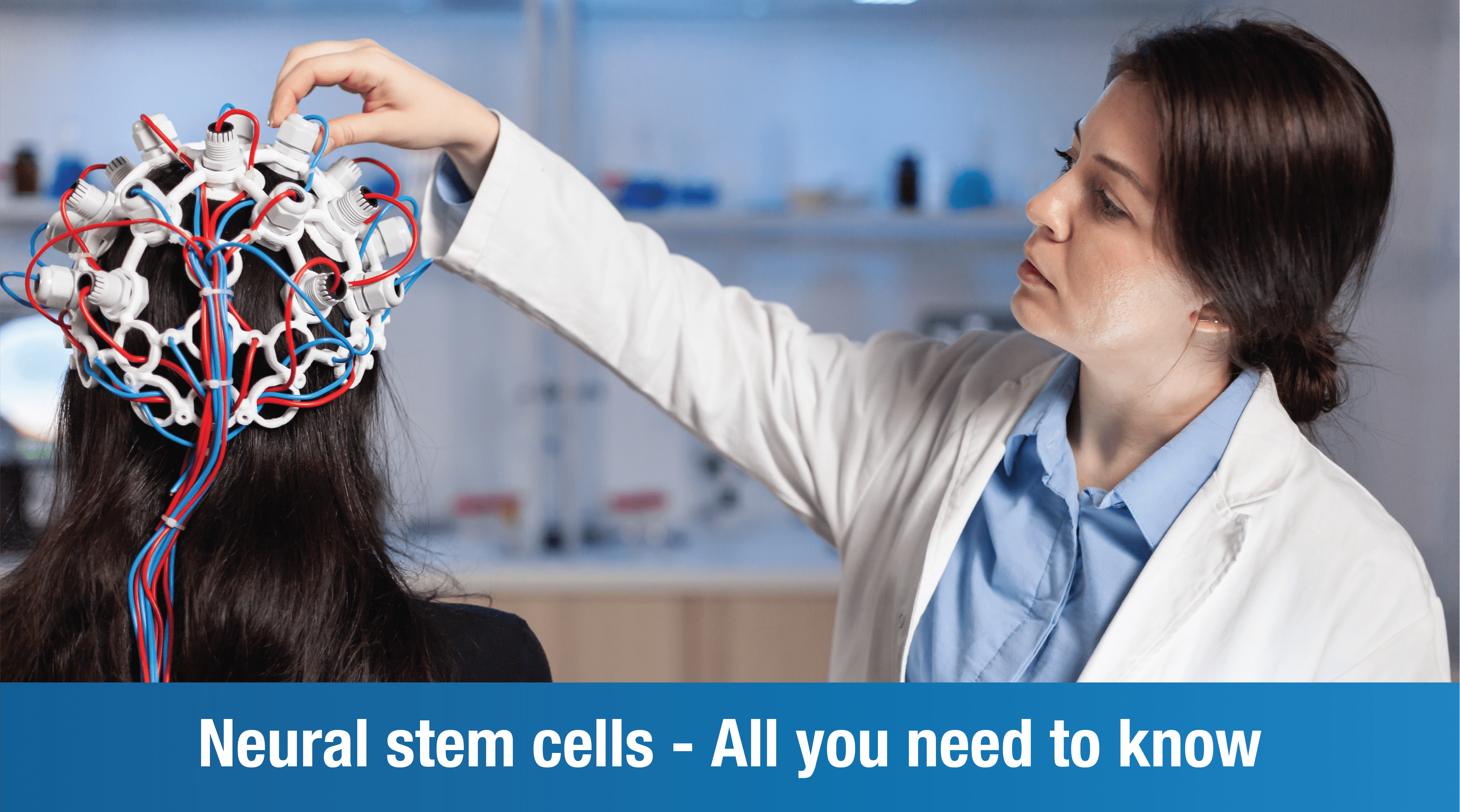
Neural Cells – All you need to know
Brain injuries and brain disorders come with devastating and life-altering consequences. And while modern medicine has established cures for many complex illnesses, disorders and injuries to the central nervous system (CNS) still remain largely without a solution. However, modern medicine has also enabled regenerative rehabilitation programmes that can help with symptom management, slowing down the progression of degenerative conditions, and improving quality of life.
Neural Cells play an integral role when it comes to neural development as well as repair/reconstruction of damaged nerve tissue. This essentially means through neural Cells transplantation, damaged brain tissue can be repaired and/or replaced.
But what are neural Cells? How do they function? How do they help in the post-operative care of brain injuries? Let’s read on to find out.
What are neural Cells?
Oligodendrocytes are known to produce brain tissue (myelin) and also have the ability to self-renew. They are responsible for the effective relaying of messages (neuronal communication) through a process known as myelination.
In the case of brain injuries, damage to the oligodendrocytes can be potentially life-threatening. Damage to oligodendrocytes can result in demyelination, which can lead to motor and cognitive impairment.
Found actively in the central nervous system, neural Cells are undifferentiated, self-renewing and multipotent cells that have the ability to differentiate into neuronal neurons, oligodendrocytes, and astrocytes. Neural Cell transplantation can help in the repair of damaged oligodendrocytes and other brain tissue.
Classification of neural Cells
The term ‘Cells’ is often loosely interchanged with ‘precursor cells’ and ‘progenitor cells’. However, each of these cell types have different features and functions. For example, neural Cells (NSCs) are multipotent self-renewing cells; neural progenitor cells can be unipotent, bipotent, or even multipotent, but they cannot self-renew. Below are the types of undifferentiated cells found in the CNS:
-
- Neural tube epithelial cells exist only in the embryonic stage and can generate neuroblasts and radial glial neurons. These cells have the strongest differentiation potential.
- Radial glial neurons, through differentiation, can simultaneously produce glial cells and/or neuronal precursor cells. Their primary function is to complete the basic nervous tissue in the nucleus and cortex of the brain, a part of childhood development.
- Neuroblasts are the main NSCs in the adult body. They can divide and produce neural precursor cells, glial cells, and neurons.
- Neural precursor cells are a mixed population of NSCs and progenitor cells which have been derived from induced pluripotent Cells (iPSCs) and embryonic Cells (ESCs).
- Neural tube epithelial cells exist only in the embryonic stage and can generate neuroblasts and radial glial neurons. These cells have the strongest differentiation potential.
Functions of neural Cells
Neural plasticity or neuroplasticity or brain plasticity is the ability of the nervous system to alter its activity/functioning in response to intrinsic or external stimuli. This is done by reorganising the functions, structure, and connections of the nervous system. Neuroplasticity is an integral attribute of neural Cells and empowers them to perform the following functions:
- Support the growth and development of entire nervous system
- Repair or replace damaged nerve tissue and neurons during illness
Application of neural Cells
Neural Cells have shown incredible promise in managing the following conditions:
Stroke – Also known as cerebrovascular accident, a Stroke occurs when the blood supply to a part of your brain is interrupted or reduced, preventing the brain tissues from getting oxygen and nutrients. This causes extensive damage as the brain cells slowly deteriorate and eventually die.
- Endogenous Approach: Involves stimulating adult NSCs that are present in the patient’s own body
- Exogenous Approach: Involves extracting neural Cells, growing them in laboratory conditions, and finally transplanting them into the regions of the brain affected by stroke
Parkinson’s – A progressive, chronic, and degenerative brain disorder, Parkinson’s impairs motor function. It results in the deterioration of the cells in substantia nigra, and inhibits the brain’s ability to produce dopamine, the happy hormone. In the advanced stages of Parkinson’s, the neurons in the brain completely deteriorate leading to severe motor impairment, tremor, stiffness, slowed or delayed movement, dysphagia, sleep issues, fatigue, difficulty in speech, etc.
Research has indicated that neural Cells injected into the brain help repair damaged brain tissue. This can considerably reduce the infamous Parkinson’s tremor. These injected neural Cells may also differentiate into dopaminergic neurons that have the ability to slow down the progression of the disease.
Patients with brain disease and certain neurological disorders can also benefit greatly from neural Cell therapy.
FAQs
What are the advantages of neural Cells?
Neural Cells can help in managing brain injuries and neurological disorders caused by damage to the brain and/or parts of the brain. Injected Cells can potentially differentiate into astrocytes, neuronal neurons, and oligodendrocytes. Regeneration or replacement of dead or damaged oligodendrocytes with healthy ones can help restore function, reduce symptoms, and even slow down the progression of the neurological condition.
What are the applications of neural Cells?
Neural Cells help in the development of the nervous system, as well as repair damaged nerve tissue.
How are neural Cells harvested?
Neural Cells are directly derived from embryonic or adult neural tissue. They can also be harvested through differentiation of embryonic Cells or induced pluripotent Cells in laboratory conditions.
Where do neural Cells originate from?
Neural Cells originate in the brain.
Do neural Cells regenerate?
Yes, neural Cells are multipotent and self-renewing Cells.










